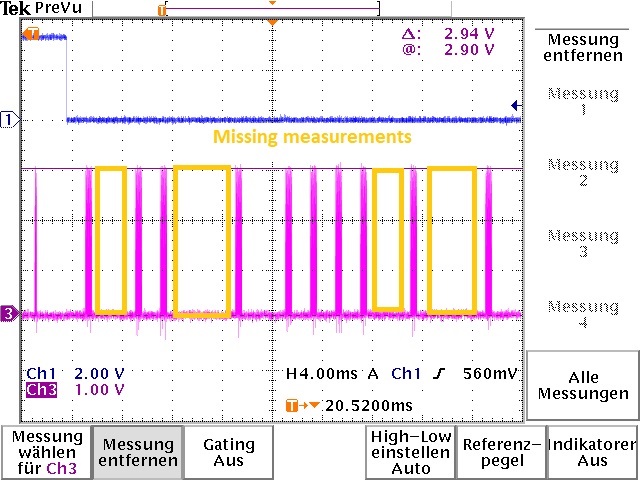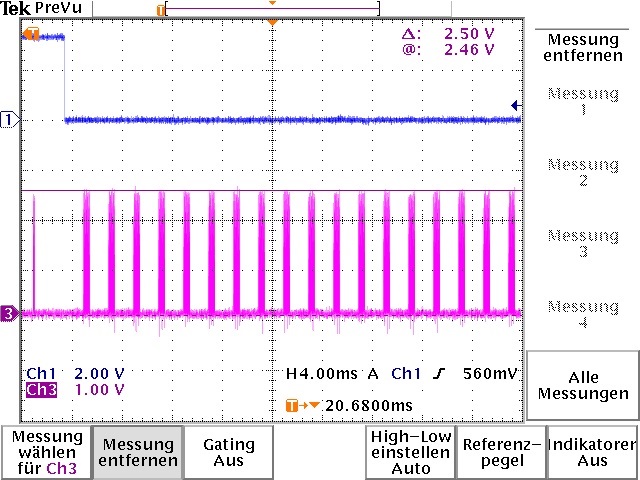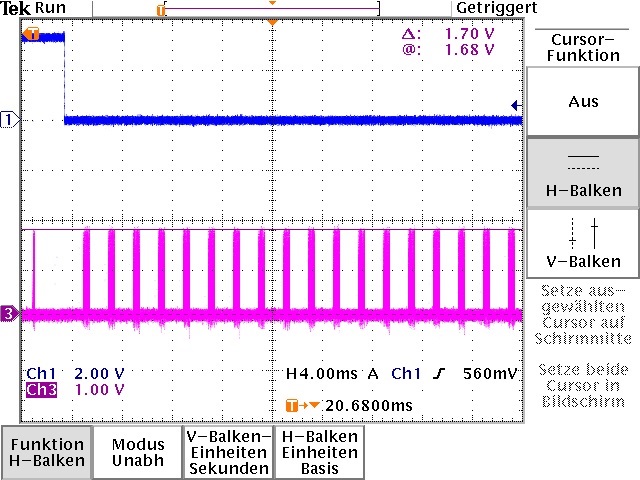Dear TI Team,
We´re currently developing on an application using the TI LDC1614 as proximity sensor, whereas the LDC is operated in four channel - sequential mode using a measurement frequency between 1.5 and 2MHz. A highly precise external 40MHz clock is used as reference clock. The LDCs config reads as follows:
CONFIG = 0xDE01
MUX_CONFIG = 0xC20D
R_COUNT = 2400 and R_SETTLE = 96 (same setting applies for all 4 channels -> yields an measurement update frequency of 250Hz)
FIN_DIVIDER = 1, F_REF_DIVIDER = 1 (same setting applies for all 4 channels)
I_DRIVE_CURRENT = 31
Applying those settings yields an analog signal amplitude of approx. 1.6 - 1.7V, what actual complies with the chip requirements. However, the LDC1614 seems sometimes (completely arbitrary behavior) not to be able to excite the oscillation circuit on one or more of the LDC channels. The following figure shows the phenomenon.
The yellow graph indicates a reference signal, the blue graph shows the signal of the LDCs CH0. Obviously the LDC sometimes misses to excite the resonance circuit.
In the course of dissolving the issue we tried to lower the content of the I_DRIVE_CURRENT register (e.g. 28) -> the signal amplitude drops to ~1.3V and the problem completely vanishes. As we´re not really able to understand this phenomenon we would highly appreciate your expertise related to the problem.
Kind regards,
John




